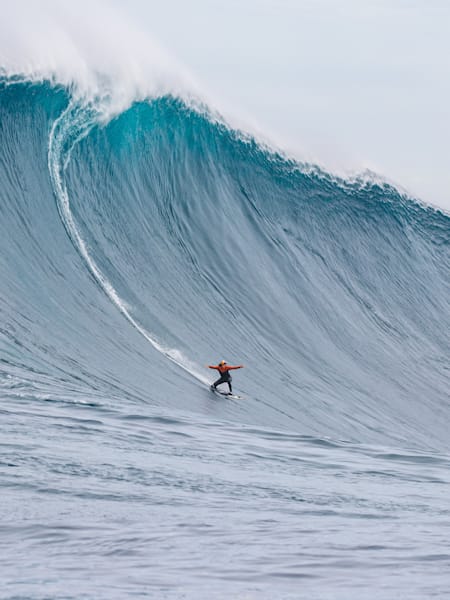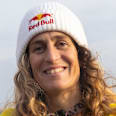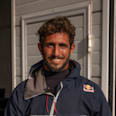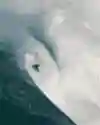Fittingly, the birth of big wave surfing happened on the same Hawaiian island where surfing itself originated: Oahu. For centuries, Hawaiians of all classes surfed together on the smaller waves of Oahu's southern shores along the beaches of what today is Honolulu, with Waikiki being the most famous of them all.
Surfing's roots run deep on Oahu's southern shores
Hawaiian waterman Duke Kahanamoku was a swimming champion and renowned surfer who not only shaped Hawaiian surfing history but, in 1914, introduced modern shortboard surfing to Australia and kickstarted the sport there as well. These days, Hawaii's 'Ambassador Of Aloha' is in both the Swimming and Surfing Hall Of Fame, while a statue of The Duke stands over the sands of Kuhio Beach Park in tribute to the impact he had on surfing history over 100 years ago.
From Makaha to Waimea
Towards the 1950s, as surfing continued to gain popularity and surfboard construction and technology improved, surfers on Oahu began turning their attention to the much larger waves on the West Side, around Makaha Point.
More and more visiting surfers from Australia, the United States, Brazil and South Africa started turning up in Oahu each winter, and together with the Hawaiians they began tackling the island's biggest waves. For a long time Makaha remained Oahu's premier big wave, but before too long the truly huge waves of Waimea, on the North Shore, took centre stage.
Pipeline rings the changes
Just up the beach from Waimea, waves like Pipeline and Sunset offered surfers more big wave options and conditions that required a more diverse set of technical skills – namely barrel riding.
At first it was the goofyfooters who ruled the roost at Pipeline, but in the late 1990s the backhand tuberiding technique of pigdogging opened up fresh angles for the natural footers. Meanwhile, on the other side of the peak at Backdoor, world titles started being won by those heading right.
As the art of tuberiding was being dialed in with military precision in waves under 20-feet, the art of riding waves beyond that size was about to undergo a major quantum leap as well.
The strapped revolution
From the 1970s onwards, big wave surfing spread through surfing communities around the world, yet its uptake and evolution was far slower than that of its high performance counterparts.
That all changed in the 1990s, though, when a small group of surfers and windsurfers from Maui, including Laird Hamilton, Dave Kalama, Pete Cabrinha, Darrick Doerner and Rush Randle, began to think about how they could tame the giant peaks that broke off at an open ocean wave called Pe'ahi that they'd only ever ridden before while windsurfing.
Given its mountainous peak and huge, hollow barrels, the surfers nicknamed the wave Jaws, in honor of that era's most famous man-eating movie star, and another aquatic star was born. The problem with Jaws was that the wave moved in from the horizon so fast that it was – at the time – impossible to catch with paddle power alone.
But the surfers figured out a solution – using an inflatable, motor-powered Zodiac to tow each other into the waves. They attached foot straps to their boards and headed out to meet Jaws head-on, opening up a whole new realm of possibilities in the process.
Stories about the exploits of the Strapped Crew soon spread around the world, and from covers on National Geographic magazine to feature-length films, it seemed that they had reinvented big wave surfing overnight. Jet skis were introduced to the equation soon afterwards, and limits have continued to be pushed ever since.
A return to the roots... with a tech twist
For the first decade of the new millennium, tow surfing was the preferred way to tackle the biggest waves – until a new generation of purists, aided by some inventive surfboard shapers, decided to take the sport back to its roots.
Surfers and shapers worked together to redesign big wave surfboards so that they could be paddled faster, meaning they can catch bigger waves while still maintaining a high degree of manoeuvrability, allowing for more radical surfing.
For the first few years of this purist revolution, it seemed as if the days of jet skis buzzing the lineups of the world's biggest waves were over. Instead, they became tools of safety. Big wave surfers found that they could use the machines to zip into the dangerous 'inside' sections of big wave breaks to quickly pluck a surfer who had just wiped out from the water and whisk them to safety.
Along with inflatable vests and safety teams, the jet ski has become an integral part of any big wave session, whether as a method of entry or as a means of escape.
Chasing the horizon
Surfing's ultimate prize still remains elusive, but now more than ever the world's best are equipped to ride the hugest of waves if and when it arrives. Most recently tow crews have been trawling deep sea, outer ocean reefs in search of sheer size, no matter how perfect a storm of precise conditions is required to see them deliver.
Elsewhere, at crazy slabs like The Right in Western Australia, many locals believe it's been ridden as big as it holds, and the challenge now is to reverse-engineer the process and see if the wave can be paddled into and negotiated. So far, the few people brave enough to attempt the feat haven't come close, but that only drives them harder to keep coming back for more.
Today, there are many top big wave venues around the world, from California's Mavericks to Ireland's Mullaghmore, South Africa’s Dungeons to Portugal's Nazaré and a lot more. No matter where you find a huge wave, you're going to find someone dedicating their life to riding it.
The experience of watching a human drop down the face of a giant wave remains the same as it always has – pure adrenaline.





















